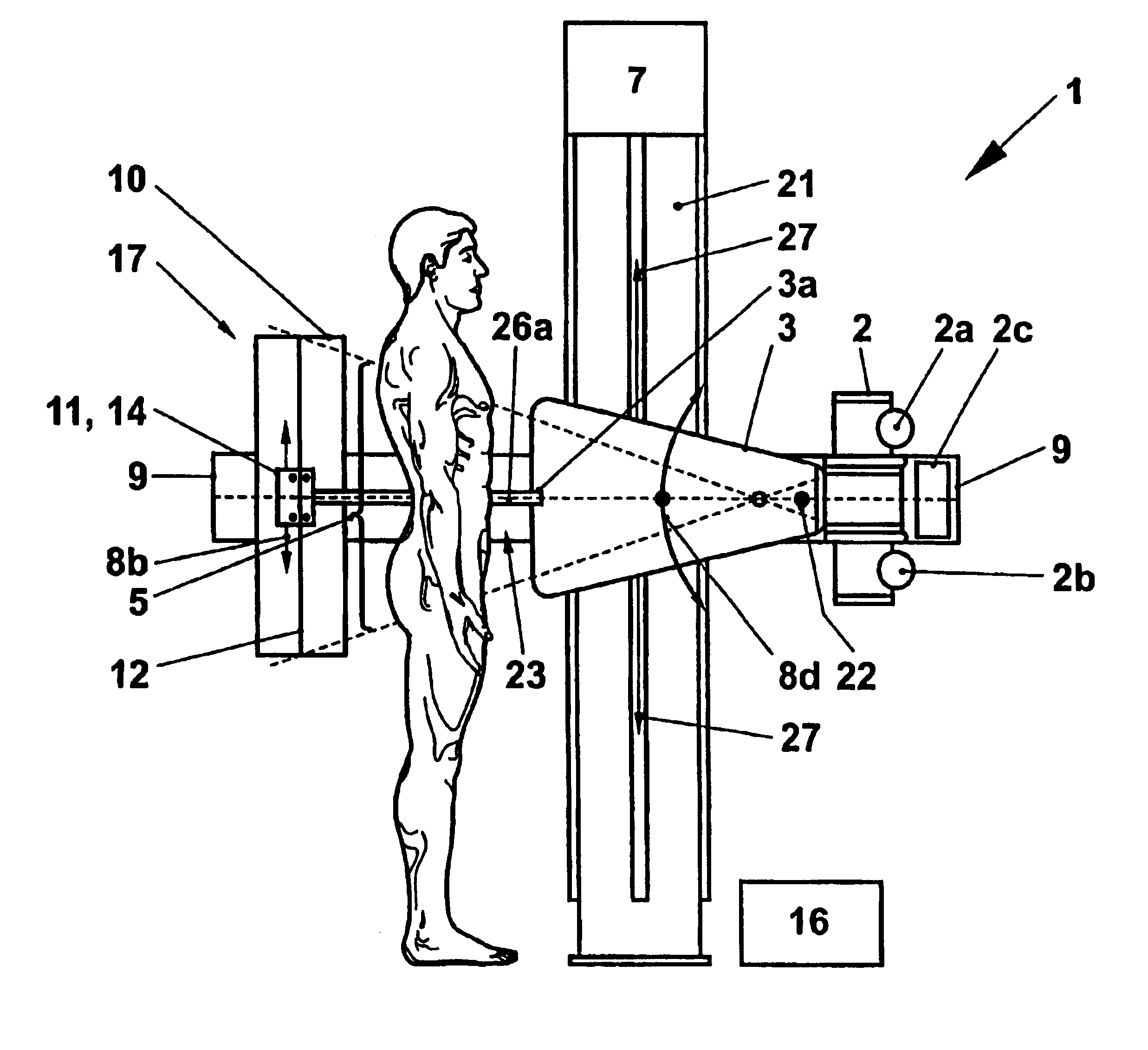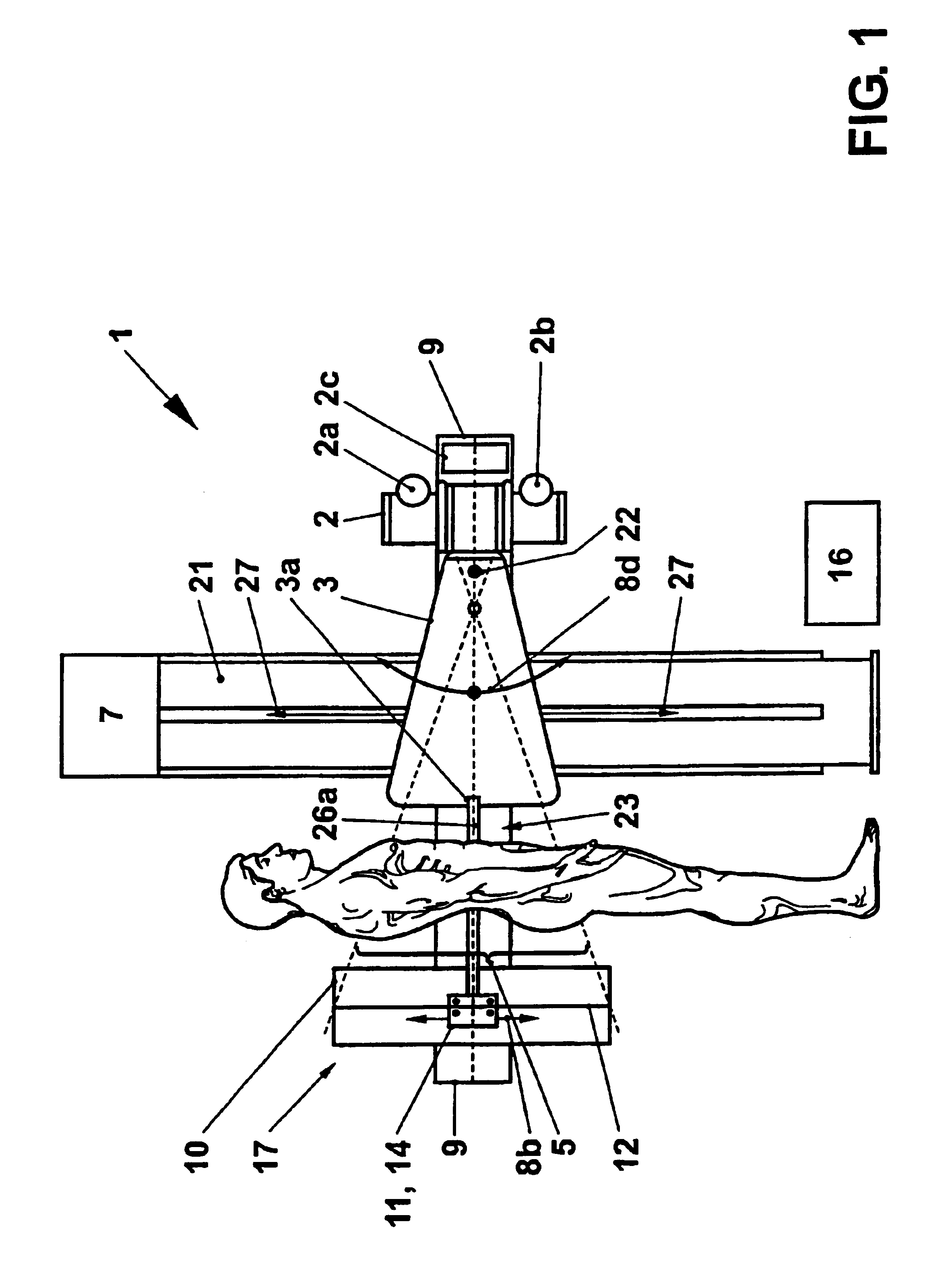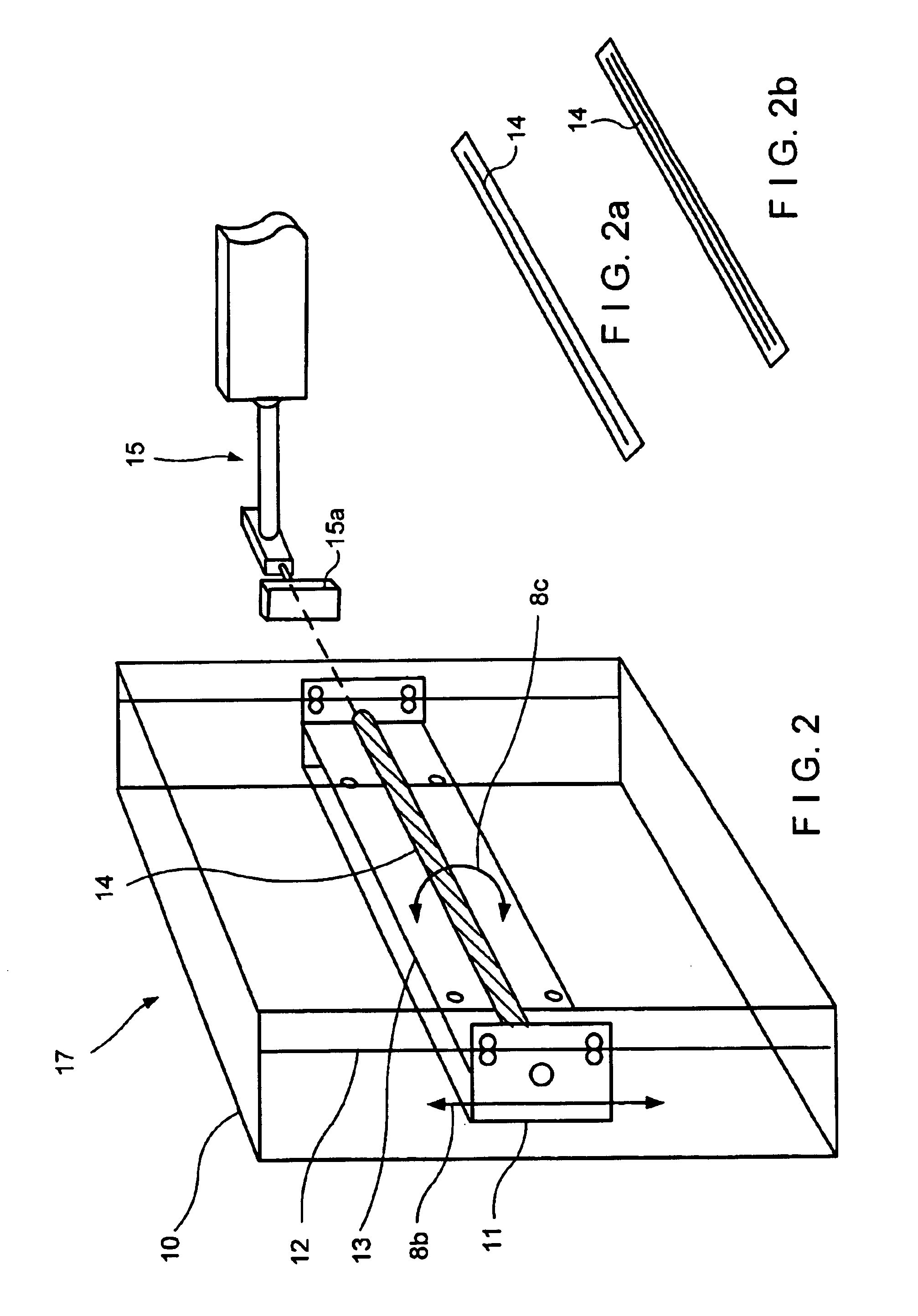Digital X-ray scanning apparatus
a scanning apparatus and digital technology, applied in the field of x-ray imaging, can solve the problems of inability of digital sensors to deliver useful x-ray images of patients' bodies, inability to maintain constant distance source-detector distance, and inability to achieve large-scale parallel data processing. , to achieve the effect of high image quality, avoiding massive parallel data processing, and high image quality
- Summary
- Abstract
- Description
- Claims
- Application Information
AI Technical Summary
Benefits of technology
Problems solved by technology
Method used
Image
Examples
Embodiment Construction
[0035]The invention refers to an X-ray apparatus 1 as exemplified in FIG. 1. The apparatus 1 comprises an X-ray source 2 with an anode 2a and a cathode 2b (indicated schematically), a collimator 3 with a collimator silt 3a and an X-ray detector arrangement 17, a supporting arm 9 for holding the X-ray source 2 and the detector arrangement 17 and a structure or mount 21 for suspending the supporting arm 9. The detector arrangement 17 includes mounting and scanning means 10-12 for an X-ray detector 14. These means 10-12 comprise a detector housing 10 and a carriage 11 that is movable along guiding rails 12. The scanning means further comprise at least one motor 7. Means 16 for digital data acquisition from the X-ray detector 14 and a control unit 2c for steering the X-ray apparatus 1 are provided. A digital image of a patient's body is generated by scanning a collimated X-ray beam 26a over an area 5 and coordinately moving the carriage 11 with the detector 14 along a path 8b and / or 27....
PUM
 Login to View More
Login to View More Abstract
Description
Claims
Application Information
 Login to View More
Login to View More - R&D
- Intellectual Property
- Life Sciences
- Materials
- Tech Scout
- Unparalleled Data Quality
- Higher Quality Content
- 60% Fewer Hallucinations
Browse by: Latest US Patents, China's latest patents, Technical Efficacy Thesaurus, Application Domain, Technology Topic, Popular Technical Reports.
© 2025 PatSnap. All rights reserved.Legal|Privacy policy|Modern Slavery Act Transparency Statement|Sitemap|About US| Contact US: help@patsnap.com



